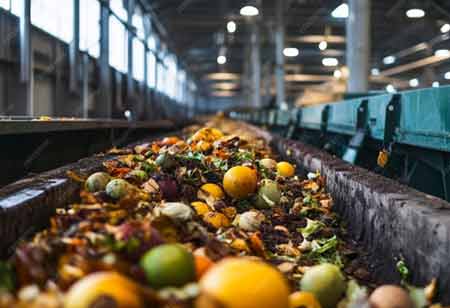THANK YOU FOR SUBSCRIBING
Be first to read the latest tech news, Industry Leader's Insights, and CIO interviews of medium and large enterprises exclusively from Food and Beverage Tech Review
Harnessing the Power of pH Sensors in Food Processing and Preservation
PH sensors are essential for determining a substance's acidity or basicity in food processing and preservation. They are necessary to preserve food's safety, quality, and shelf life.

By
Food and Beverages Tech Review | Wednesday, January 31, 2024
Stay ahead of the industry with exclusive feature stories on the top companies, expert insights and the latest news delivered straight to your inbox. Subscribe today.
This article explores how pH sensors can improve food processing and preservation, highlighting their potential to revolutionize food preparation and storage.
Fremont, CA: PH sensors are essential for determining a substance's acidity or basicity in food processing and preservation. They are necessary to preserve food's safety, quality, and shelf life.
What is pH?
pH measures a substance's acidity or basicity on a scale of 0 to 14, where 0 is the most acidic, 7 is neutral, and 14 is the most basic. Food's pH directly relates to its quantity of free hydrogen ions. The distinct sour taste of acidic foods is caused by free hydrogen ions produced by dietary acids. In this sense, pH is considered the negative log of the concentration of hydrogen ions or a measure of free acidity. pH is an essential factor in food processing and preservation because it affects the rate of microbial growth, enzyme activity, and chemical interactions that could cause food to deteriorate or spoil.
Significance of pH Sensors in Food Processing and Preservation
Because pH sensors are essential to the food processing and preservation industries because they provide accurate and consistent readings of the pH levels in food products, which are used to monitor and control processes like pasteurization, fermentation, and preservation, ensuring food products are preserved and processed at the ideal pH level is vital since it can affect the product's safety, quality, and shelf life.
Types of pH Sensors
Glass electrodes, ISFET (ion-selective field-effect transistor) sensors, and optical sensors are some of the available pH sensor types. Glass Electrodes: A glass bulb with a reference electrode and a sensitive electrode is used to create pH sensors. The pH difference between the sample and the reference electrode, which occurs when the glass electrode is immersed in the sample, generates a voltage that the sensor monitors. ISFET sensors, on the other hand, use a field-effect transistor to determine a sample's pH.
pH Sensors' Uses in Food Processing and Storage
pH sensors find application in fermentation, pasteurization, preservation, quality control, and other food processing and preservation aspects.
Fermentation and Pasteurization Processes:
PH levels influence the development of the bacteria that produce fermentation. Hence, it is essential to employ pH sensors to monitor pH levels during fermentation operations to ensure that the end product, such as yogurt, is safe and of high quality. Similarly, pH sensors ensure that the pH level is within the proper range during the pasteurization process, a heat treatment technique used to eliminate dangerous germs and extend the shelf life of goods.
Food Preservation and Quality Control:
Because canned goods have a low pH, which might hinder the growth of bacteria that can cause spoiling, it is essential to employ pH sensors to maintain the proper pH level for the products' safety and shelf life. Similarly, pH sensors guarantee the acidity and sweetness range essential for ensuring high-quality beverage production.
I agree We use cookies on this website to enhance your user experience. By clicking any link on this page you are giving your consent for us to set cookies. More info







